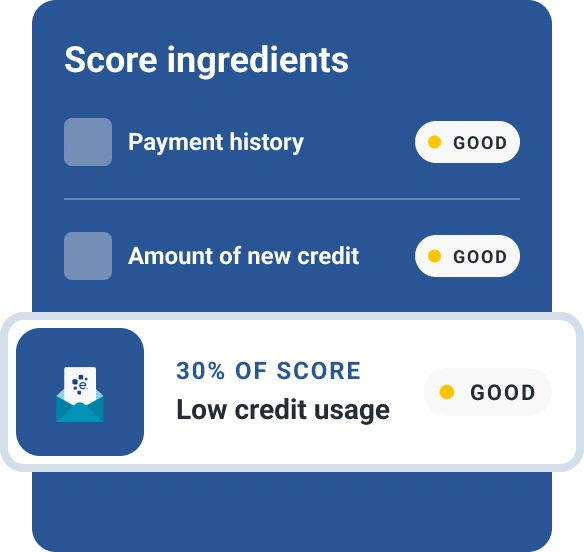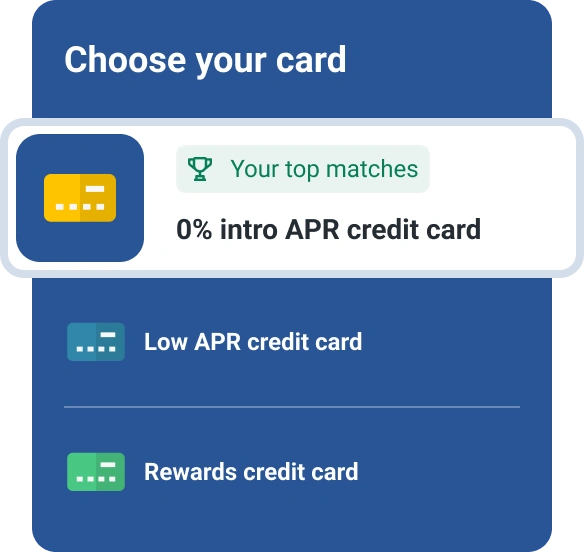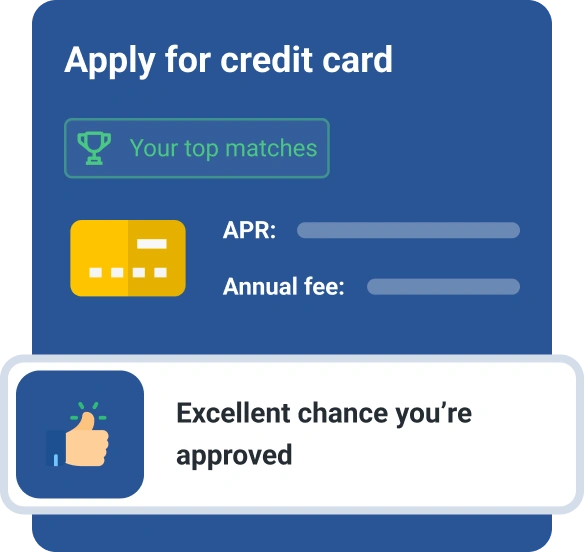What Happens When Your 0% Introductory APR Ends
Quick Answer
Credit cards with 0% introductory APRs give you an extended interest-free period to tackle high-interest debts or large purchases. Once the introductory period ends, any remaining balance is subject to your credit card’s standard rates, which could be quite high.

With a 0% intro APR credit card, you can enjoy an interest-free period that could give you enough time to pay off other high-interest debts or a large purchase without paying a cent in interest charges.
Unfortunately, the introductory offer doesn't last forever. When a credit card's intro 0% annual percentage rate (APR) period ends, you'll incur interest on any remaining balance and new purchases that aren't paid in full by the due date. Let's take a closer look at how the 0% introductory period works and what to do once it ends.
Do Interest Rates Change After an Introductory Period?
As their name suggests, introductory offers are special terms credit card companies offer new cardholders. Usually, these offers are designed to incentivize potential applicants to sign up for a new card and make new purchases.
A 0% introductory APR credit card gives you a specific period to make transactions or transfer balances from other credit cards without incurring interest charges. However, once the credit card's promotional period ends, your account is subject to the standard interest rates specified in your cardholder agreement.
For example, let's say you are approved for a credit card with an introductory period lasting 12 months, and you use it to purchase a $1,500 laptop. Over the next 12 months, you pay down your balance by $1,000, leaving you with a $500 balance when the introductory period ends. At that point, your credit card's regular APR will begin accruing interest on the remaining $500 balance. The interest charges could increase your monthly payments over time if you don't pay down the balance quickly.
Understanding Your Card's APRs
Credit cards with 0% introductory offers have several APRs, but there are two you'll want to pay close attention to as your promotional period comes to an end: the purchases and the balance transfer rate.
- APRs for purchases: This APR applies to the day-to-day purchases you make with the card. Once an introductory APR for purchases ends, the portion of your balance stemming from new purchases will be assigned a new APR and start to accrue interest at that rate. Your specific rate will depend on your creditworthiness, income and other factors and will be assigned when you're approved for your card.
- APRs for balance transfers: This APR applies to debt you transfer to the card from other credit cards. It could allow you to avoid paying interest for up to 21 months, but may only apply to balance transfers made during the first few months you have the card. Once a promotional balance transfer APR expires, a new APR will be assigned to any remaining balance.
Of course, your best option is to zero out your balance before the introductory period expires so you don't pay unnecessary interest charges on your balance transfers or purchases. However, if that's not possible, keep track of your credit card balances and be aware of when the intro period ends and plan for the payment increase.
How to Pay Off Your Balance Before the Intro 0% APR Ends
A little planning and intentional action can go a long way toward paying off your balance during your credit card's promotional period. Consider the following options to help you wipe out your balance and avoid interest charges:
- Create a payment plan. It may be easier and less stressful to tackle your balance when you break it into smaller, bite-sized chunks. Divide your balance by the number of months in the intro period to determine what you'll need to pay each month to eliminate the balance on time.
- Make a lump-sum payment before the intro period ends. If you have room in your budget, make a lump-sum payment toward the end of your intro period to pay off the balance. Consider taking on part-time work or a side gig for additional income to settle your outstanding balance.
- Transfer the balance. If you still owe a substantial amount and want to avoid paying interest on it, consider transferring your remaining debt to a new card—preferably another one with a 0% intro APR offer. If approved, you can continue paying down your balance interest-free. Look for a credit card that doesn't charge balance transfer fees, which are usually around 3% to 5% of your transfer amount.
Managing your credit card account responsibly can help prevent your balance from ballooning out of control and minimize the amount you must repay. As a general rule, don't use your credit card for unnecessary purchases or impulse spending. Consider setting up automatic payments to make sure you don't miss a due date, which could result in penalties that increase your balance.
What Happens if I Have a Balance Left Over After the Intro Period?
If your account has a balance remaining after the introductory period ends, you can either transfer your debt or work to pay off the debt with interest.
- Transfer your debt. Consider transferring your outstanding balance to another credit card with a 0% introductory APR period with no balance transfer fees (if possible). This option gives you additional time to bring your balance to zero without incurring additional interest charges. Another option worth considering is to transfer your balance to a debt consolidation loan. This type of installment loan usually comes with a fixed interest rate and payments that remain the same for the duration of your term. You may prefer taking this route if you want a predictable payment schedule with a set end date for your final payment.
- Pay off your debt with interest. If you don't want to apply for another card or a consolidation loan, you can simply leave the balance on your card and pay the new interest as it accrues. Aim to pay more than the minimum monthly payment to reduce the amount you'll pay in interest over time. To accelerate the process, consider cutting spending from nonessential expenses and reallocating the money you save toward paying down your balance.
Should I Keep My Card Open After Paying My Balance?
Paying off your credit card balance is a milestone worth celebrating. You may even consider closing your account, but think twice before doing so. Unless your card has an annual fee that exceeds your budget, keeping the credit card account open may be your best option, particularly when it comes to your credit health. Closing a revolving credit line has the potential to raise your credit utilization ratio, which makes up 30% of your FICO® ScoreΘ for free, the credit score used by 90% of top lenders.
If you choose to keep your credit card, it's wise to use it periodically to prevent your card issuer from declaring your account status inactive. While there's no set rule for how often you should use your credit card, utilizing it every few months may help you avoid credit card cancellation for inactivity.
Keeping your credit card account open can also benefit you if the card offers perks and bonuses aside from the 0% intro APR. For example, you may receive rewards based on purchases you routinely make or a flat cash back rate that applies to all your transactions. If you don't use your card's other features, consider contacting your card issuer and requesting a product change to a different card within their portfolio. A product change could allow you to upgrade or downgrade to a different credit card within your card issuer's lineup without negatively impacting your credit score.
How to Maximize Your 0% APR Card
Follow these tips to maximize the value of a 0% APR credit card:
1. Find the Card With the Longest Intro Period
The longer the intro period, the more money you can save on interest and the smaller your monthly payments will have to be to avoid it altogether. Promotional periods vary by lender from a few months up to 21 months, but look for a 0% intro APR card with the longest intro period if you could use the extra time.
2. Develop an Aggressive Payment Plan
It's easy to acquire a large balance on a 0% APR card, especially if you use the card for a large purchase or transfer an existing balance from another card. Consider following an aggressive repayment strategy to clear your balance and avoid getting stuck with high interest rates once the intro period ends.
3. Know the Fees and APRs Associated With Your Card
When you're shopping for a 0% introductory APR credit card, don't forget to review the card's fees and other costs. Before signing up for a new account, you should understand the card's annual fees, late payment penalties and balance transfer fees.
Another important fee to be aware of is the penalty APR. This is a special interest rate some credit cards apply to balances once you miss a payment. Missed payments could cause you to lose your promotional 0% interest rate and trigger a new, higher-penalty APR.
Check Your Credit Before You Apply
A 0% intro APR credit card usually requires good or excellent credit to qualify, but the higher your score, the better your approval odds and favorable terms. Keep in mind, a wide variety of credit cards approve applicants with fair or limited credit, so it's worth exploring all of your options.
Consider checking your FICO® Score for free before applying to get a sense of where your credit stands and compare credit cards based on your FICO® Score.
Discover low interest credit cards
Keep more cash in your wallet with a low interest credit card. See what offers you qualify for based on your FICO® Score.
See your offersAbout the author
Tim Maxwell is a former television news journalist turned personal finance writer and credit card expert with over two decades of media experience. His work has been published in Bankrate, Fox Business, Washington Post, USA Today, The Balance, MarketWatch and others. He is also the founder of the personal finance website Incomist.
Read more from Tim

